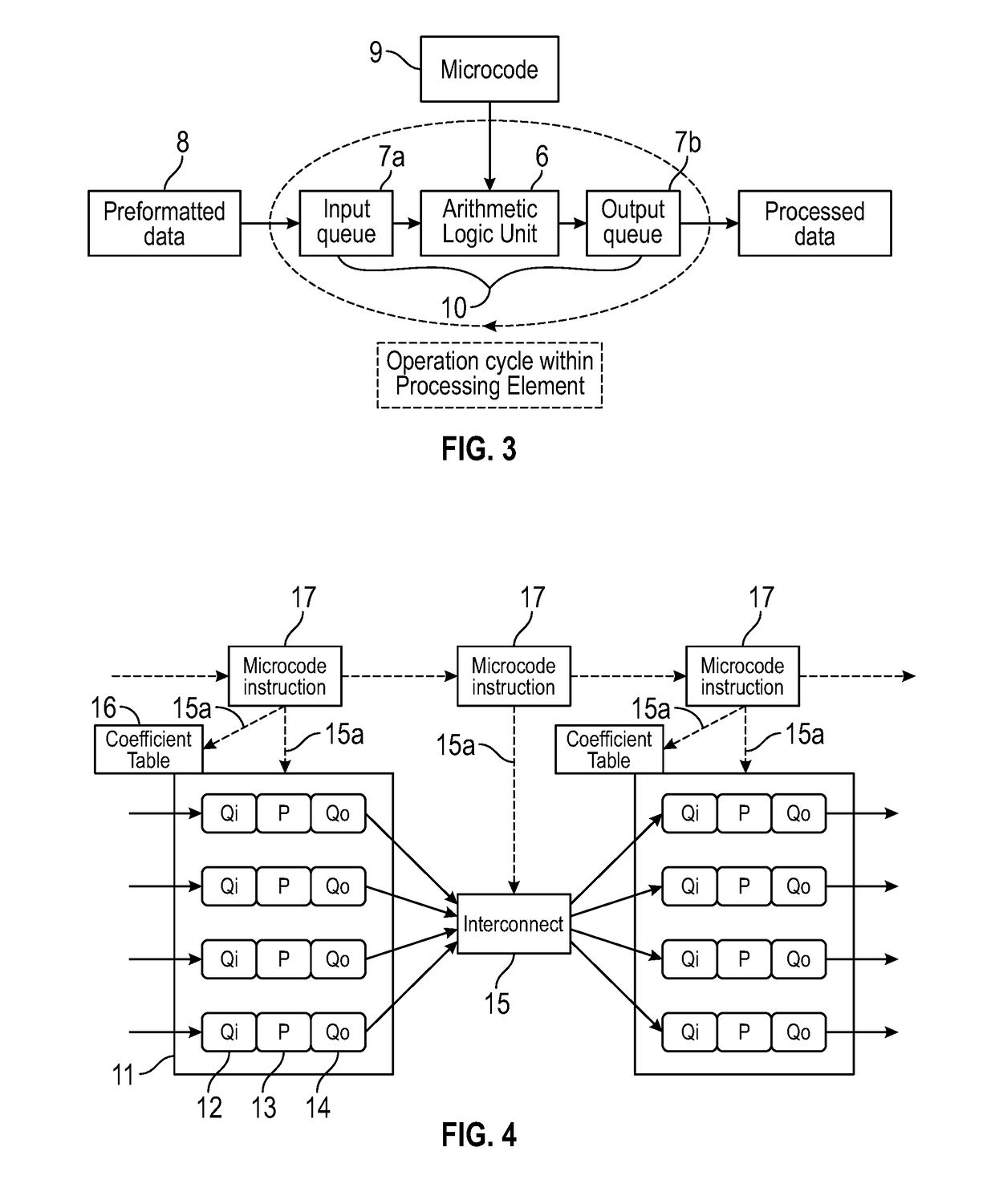Data processor
- Summary
- Abstract
- Description
- Claims
- Application Information
AI Technical Summary
Benefits of technology
Problems solved by technology
Method used
Image
Examples
example use
[0100]An example is a cross multiplication operation, as schematically illustrated in FIG. 6. This type of operation will create additional data to be transferred via the DMP and hence in the ongoing pipeline. In this example, coefficients (C) 31 and data (D) 32 present in an input queue (or input buffer) 33 in the first plane are processed according to the control field operation 27 (in this case specifying the multiplication D×C) by an ALU 34 in the processing element, and the output x1 of this operation 36 is held in the output queue 35 before proceeding to the DMP / interconnect 37. An operation 28 supplied to the DMP sets a fan out of the output x1 to all processing elements in the next plane 38 which then performs a process 30 assigned to each element in the plane 38 using not only the data x1, but also coefficients C1, C2, C3 obtained from that plane's coefficient table 29, and other data D1, D2, D3 generated from different processing elements of the first processing plane and ...
PUM
 Login to View More
Login to View More Abstract
Description
Claims
Application Information
 Login to View More
Login to View More - R&D
- Intellectual Property
- Life Sciences
- Materials
- Tech Scout
- Unparalleled Data Quality
- Higher Quality Content
- 60% Fewer Hallucinations
Browse by: Latest US Patents, China's latest patents, Technical Efficacy Thesaurus, Application Domain, Technology Topic, Popular Technical Reports.
© 2025 PatSnap. All rights reserved.Legal|Privacy policy|Modern Slavery Act Transparency Statement|Sitemap|About US| Contact US: help@patsnap.com



